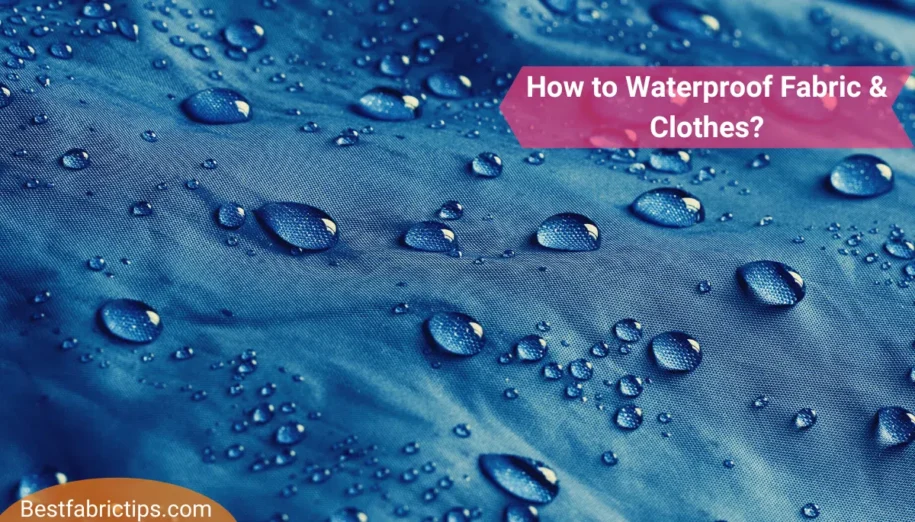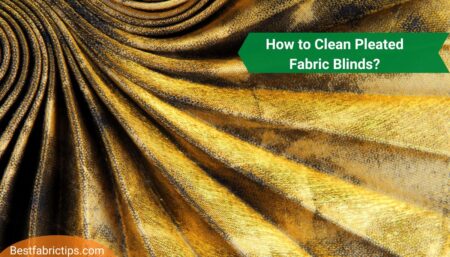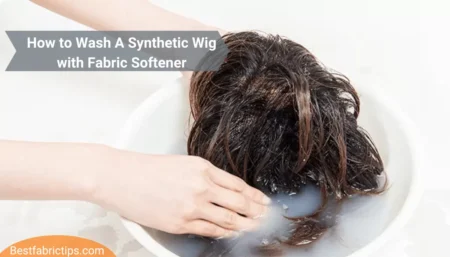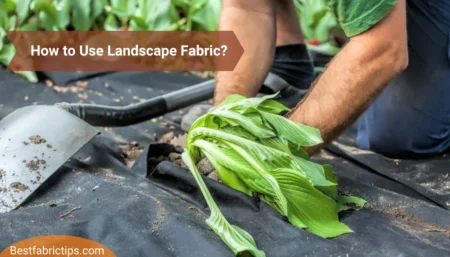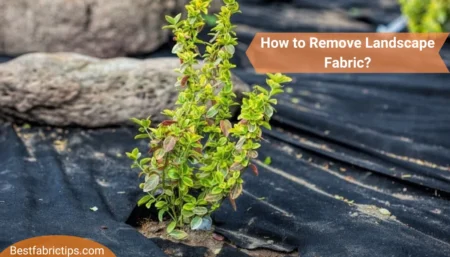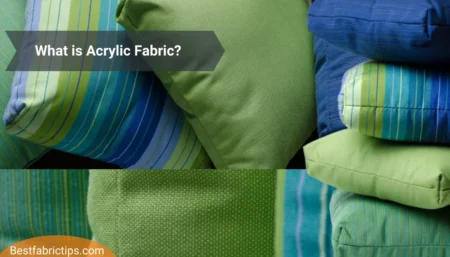Have you ever been caught in a surprise rainfall that completely drenched your outdoor furniture? What’s more, you couldn’t sit on them for many days as they dried out. It’s the absolute worst! You may not have realized, however, here’s how to waterproof fabric and clothes in a simple step-by-step guide.
- What’s the Perfect Way to Make Natural Fiber or Cotton Fabric Waterproof?
- How Can I Understand That My Fabric Isn’t Waterproof?
- Waterproofing Items
- How to Waterproof Fabric with Commercial Products?
- Can I turn fabric into a waterproof material?
- Method 1: Waterproof Clothes & Fabric By Using a Waterproof Coating
- Step1: Remove any dirt from the Fabric
- Step2: The fabric must be dried
- Step3: Purchase the seam sealer and the spray
- Step4: Spraying
- Step5: Apply the seam sealer to the seams
- Method 2: Using Wax to Waterproof Fabric
- Step1: Start with a piece of cloth that is completely clean
- Step2: Purchase a bar of natural beeswax to use as a candle
- Step3: Warm the wax and cloth only a smidgeon at a time
- Step4: The beeswax should be applied to the cloth in both directions
- Step5: Spread the wax out evenly with your fingertips to ensure that it moves uniformly
- Step6: For around five minutes, reheat the item with a hair dryer until it is warm
- Step7: If required, use your fingertips to smooth down the object once more
- Step8: Place the object in a warm, dry environment to cure
- Frequently Asked Questions
What’s the Perfect Way to Make Natural Fiber or Cotton Fabric Waterproof?
Natural fabric, cotton fabric, denim, hemp fabric, and canvas may all be waterproofed using waxing, which is the best method available. Stiff wax will darken the cloth and give it a professional appearance.
How Can I Understand That My Fabric Isn’t Waterproof?
If your clothing’s color changes while it’s being washed, it’s likely that it’s not waterproof. You can, however, resolve the issue by implementing the previously described approach.
Waterproofing Items
For example, you can make beach mats, outdoor cushions, picnic bags, and tote bags for the beach. You can also make canvas shoes for kids, play mats for kids, and even a beach ball.
How to Waterproof Fabric with Commercial Products?
There are a plethora of commercial waterproofing options available on the market today. The majority of methods include spraying the cloth. Scotch-guard is a well-known substance that is used to keep sofas and shoes waterproof.
Can I turn fabric into a waterproof material?
The truth is that you cannot transform cloth into a completely waterproof material. However, you may apply a waterproof coating to make it more water resistant. But don’t be too hard on yourself. Adding a waterproof coating or waxing is sufficient to make fabrics resistant to abrasion. In order to reapply the coating to waterproof cloth, the DWR spray should be used.
Method 1: Waterproof Clothes & Fabric By Using a Waterproof Coating
If you must work outside, choose a day that is dry and windless. Why?
Dry weather makes it easier to prevent humidity, which can interfere with the performance of spray-on sealers. Again, the wind may carry dust into the area, which might become lodged in your fabric, which is something you do not want.
Step1: Remove any dirt from the Fabric
If the cloth is clean, there is no need to do this step, as previously stated. You can use a soft-bristle brush to clean the fabric if it can’t be cleaned or is only a little dirty.
Step2: The fabric must be dried
Before attempting to waterproof a fabric with a spray-on sealer, be sure the cloth is completely dry before proceeding. The problem is that the sealer won’t stick to wet cloth because of the water. Transporting the cloth to a well-ventilated space, such as outside the home (if you aren’t already working from outside the house), is recommended.
If you’re stuck inside and unable to work from the outside, consider opening a window. This will assist you in avoiding the unpleasant odors that the sealers may have emitted. If you have a sensitivity to sprays, try using goggles and a mask, as well as maybe applying a protective coating.
Step3: Purchase the seam sealer and the spray
It is possible to get them from a camping supply or outdoor store. If the clothing you’re trying to waterproof will be exposed to the sun on a regular basis, it’s critical that you select a spray with UV protection to ensure that it doesn’t lose its effectiveness. It will also help to keep the cloth from deteriorating over time. It should be noted that these sprays perform best on canvas, leather, and nylon.
Step4: Spraying
During this process, keep the can approximately 7 inches away from the fabric’s surface. With regard to the sealer, apply it in a thin, even coating, overlapping each stroke very slightly as you go.
Applying two or three coatings can improve the waterproofing of the cloth even further, but you must allow each coat to dry completely before applying the next. In most cases, it will take about 4 hours for the paint to dry, but you should always check the directions first.
Step5: Apply the seam sealer to the seams
In most cases, seam sealers are packaged in small vials with applicators attached to the top. What you need to do is gently squeeze the bottle while rolling the applicator over the seams until the product is evenly distributed.
Method 2: Using Wax to Waterproof Fabric
So in method 2 I will be sharing how you can use wax to make your fabric waterproof. Let’s begin:
Step1: Start with a piece of cloth that is completely clean
If the cloth you’re working with is soiled, wash it and allow it to dry fully before continuing. Canvas shoes and backpacks are the ideal candidates for this procedure.
Step2: Purchase a bar of natural beeswax to use as a candle
When making this, pure beeswax without any additions may be preferable to you. Anything else might contain potentially hazardous substances.
Step3: Warm the wax and cloth only a smidgeon at a time
This may be accomplished by blowing them with a hairdryer or by placing them outside in the hot sun for a few minutes. This will make it easier to apply the wax later on. In order to avoid overheating your garments and melting the wax, keep the temperature of your clothes at a moderate level at all times.
Step4: The beeswax should be applied to the cloth in both directions
Move it from side to side and up and down. This will aid in the penetration of the wax into the weave of the cloth. For small seams and gaps, use the corners of the wax to get into small crevices and seams when coating a piece of clothing or a bag.
Step5: Spread the wax out evenly with your fingertips to ensure that it moves uniformly
Gently work the wax into small, constrictive regions like seams, corners, and pockets, being careful not to burn yourself. If the item you are covering contains buttons, please be sure to remove the wax before pressing the buttons.
Step6: For around five minutes, reheat the item with a hair dryer until it is warm
This will allow the wax to melt into the cloth and become a part of it. You’ll notice that the cloth is growing a little darker as time goes on.
Step7: If required, use your fingertips to smooth down the object once more
If there are any pools or puddles of wax on the cloth, smooth them out with your fingertips by moving them in circular patterns across the fabric. This will provide a lovely finishing touch to your project.
Step8: Place the object in a warm, dry environment to cure
Leave it in place for 24 hours at a time. The waxed product will be ready to use after this period of time. You may notice that the cloth is a little stiffer and darker than it was previously. This is normal. This is quite normal. The cloth will become softer with time, but it will never become lighter again.
Frequently Asked Questions
Which is the best spray for waterproofing fabrics, and which is the least expensive?
There are a lot of good and reasonably priced waterproofing sprays out there, like these:
Scotchgard Heavy Duty Water Shield Kiwi Camp Dry Heavy-Duty Water Repellent Granger’s Xtreme Repel Nikwax TX. Direct Spray-On Water Repellent Scotchgard Heavy Duty Water Shield Kiwi Camp Dry Heavy-Duty Water Repellent
Are there any textiles that are waterproof?
Yes. An outside layer known as the face fabric, which is often composed of polyester or nylon, as well as a laminated coat made of a substance known as ePTFE or Teflon, are common features of these products.

